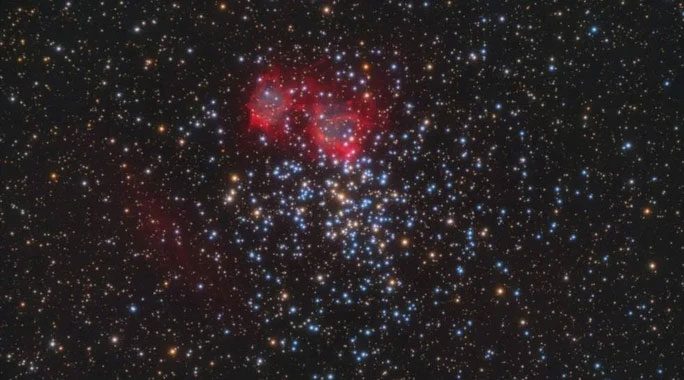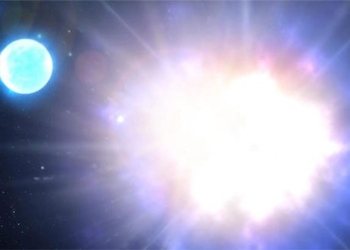Located in the open cluster Messier 37, a mysterious object 4,500 light-years away may reveal our future 5 billion years from now.
According to Space.com, this is a stunning planetary nebula with a white dwarf at its center. The main remnants of the cluster are the remains of a “stellar death” that occurred not long ago.
A planetary nebula is a long-standing misnomer, referring specifically to a cloud of gas and dust that is the remnant of an exploded star.

The Messier 37 star cluster, home to an intriguing planetary nebula – (Photo: Klaus Tubingen and colleagues)
This fascinating object was discovered by a research team led by Professor Klaus Tubingen from the University of Tübingen (Germany), promising to provide insights into our Solar System – including Earth – 5 billion years in the future.
This is the timeframe during which scientists estimate our Sun will exhaust its energy.
Initially, it will expand into a red giant star and engulf several nearby planets, including our own world. Afterward, the star and the planets it has consumed will explode before collapsing into a white dwarf.
The planetary nebula within Messier 37, featuring a white dwarf at its center and a spherical “cloud” filled with debris, gas, and dust, has indirectly illustrated that future.
Stellar death has been known for a long time but still holds many mysteries.
According to Professor Werner, part of the process that remains not fully understood is the relationship between the initial and final mass of a dying star.
However, a star like the Sun loses only half of its mass, while stars larger than eight times the Sun can lose up to 80% of their mass.
Professor Werner argues that this may be due to a heavier star consuming nuclear fuel at a faster rate by fusing hydrogen into helium. Therefore, its lifespan is shorter, and it evolves into a white dwarf more quickly.
The white dwarf in the newly discovered planetary nebula has a mass of about 85% that of the Sun, with an estimated original mass of 2.8 times that of the Sun. Being a massive star, it lost 70% of its mass upon dying.
Its surface also strangely lacks hydrogen, indicating that it has undergone a violent event similar to a thermonuclear explosion, which is the event that created the planetary nebula. Stellar explosions – supernovae – provide the surrounding space with the necessary material to form the next generation of stars.
Therefore, not only does it tell us about our future, the planetary nebula within Messier 37 also provides additional pieces to the puzzle of how the universe has evolved.





















































